
All categories
Featured selections
Trade Assurance
Buyer Central
Help Center
Get the app
Become a supplier

(3127 products available)







































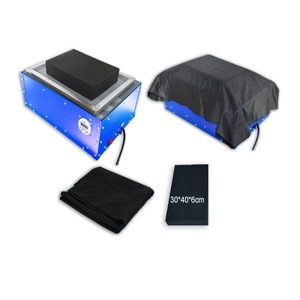


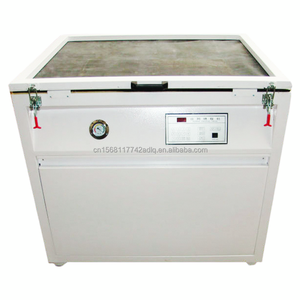

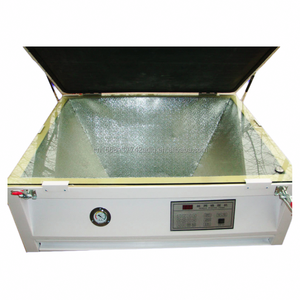



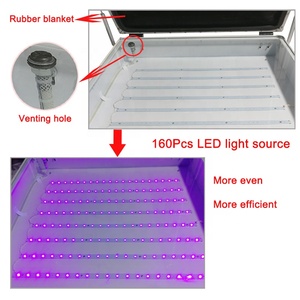
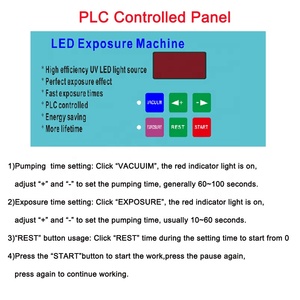


In the realm of commercial printing, exposure screen plays a pivotal role in ensuring high-quality outputs and efficient production processes. This equipment is critical in the pre-press phase, where the groundwork for successful printing is laid. exposure screen encompasses a range of devices and tools designed to prepare materials for the printing press, ensuring that images and text are accurately transferred onto the printing surface. These devices are integral to achieving precision and consistency, which are vital for maintaining the integrity of printed materials across various industries.
The world of exposure screen is diverse, with each type serving distinct functions to cater to specific pre-press needs. Common types include plate setters, proofing systems, and workflow software. Plate setters are used to create printing plates with high precision, ensuring that the final print is sharp and accurate. Proofing systems allow for the examination of prints before the mass production begins, providing a chance to catch and correct any errors. Workflow software helps streamline the pre-press operations, managing tasks such as color correction and image editing. Each type of exposure screen is engineered to optimize the pre-press process, enhancing efficiency and output quality.
exposure screen offers a multitude of functions that are essential for the pre-press phase. They facilitate tasks such as image processing, plate making, and proofing, ensuring that each step is completed with precision. Key features include automated settings, high-resolution capabilities, and compatibility with various printing technologies. Automated settings reduce human error and increase productivity by allowing tasks to be executed swiftly and accurately. High-resolution capabilities ensure that even the most intricate details are captured, which is crucial for producing high-quality prints. Additionally, compatibility with different printing technologies ensures that exposure screen can be seamlessly integrated into existing systems, making them versatile tools in any printing operation.
The construction of exposure screen involves a combination of advanced materials and components designed to deliver optimal performance. High-grade metals and polymers are commonly used in the manufacturing process to ensure durability and precision. These materials are selected for their ability to withstand the rigorous demands of the pre-press environment, such as high-speed operations and exposure to various chemicals. Furthermore, specialized components such as laser diodes and precision sensors are integrated into the equipment to enhance accuracy and efficiency. The choice of materials and ingredients in exposure screen is crucial in determining their reliability and longevity in professional printing settings.
To maximize the benefits of exposure screen , it is essential to understand their operational guidelines and maintenance requirements. Proper usage involves selecting the appropriate equipment based on the printing project’s specifications and regularly calibrating the devices to maintain accuracy. Regular maintenance, including cleaning and component checks, ensures that the equipment remains in optimal condition, preventing downtime and extending its lifespan. Additionally, training personnel on the latest technologies and techniques can significantly enhance the effectiveness of exposure screen , leading to improved print quality and operational efficiency. By adhering to best practices, users can fully leverage the capabilities of pre-press equipment in their production processes.
When selecting exposure screen , it's crucial to consider the specific needs of your printing operation. Factors such as the type of printing technology being used, the volume of production, and the level of detail required in the prints should all influence your decision. For instance, if your operation requires high-resolution prints, equipment with advanced imaging capabilities should be prioritized. Additionally, the compatibility of exposure screen with existing systems is vital to ensure seamless integration and workflow efficiency. Understanding these requirements will help in making informed choices that enhance the overall printing process.
Another key consideration is the ease of use and maintenance of exposure screen . Equipment that offers user-friendly interfaces and straightforward maintenance procedures can significantly reduce downtime and improve productivity. It's beneficial to look for features such as automated cleaning systems or easy access for component replacement, which can simplify maintenance tasks. Furthermore, selecting equipment with robust customer support and readily available spare parts can mitigate potential operational disruptions, ensuring that your printing processes remain uninterrupted.
When choosing exposure screen , important factors include compatibility with your current systems, the resolution and precision required for your prints, and the ease of integration into your workflow. Additionally, consider the equipment's scalability to accommodate future growth and technological advancements in the printing industry.
Ensuring the longevity of exposure screen involves regular maintenance and proper handling. This includes routine cleaning, timely replacement of worn components, and adherence to the manufacturer's operational guidelines. Training staff on proper usage and staying updated on software and firmware updates can also extend the equipment's lifespan.
Common challenges include maintaining color accuracy, managing complex workflows, and minimizing setup times. Ensuring that exposure screen is properly calibrated and integrated with advanced workflow software can help address these challenges, leading to more efficient and accurate pre-press operations.
Yes, many modern exposure screen are designed to be versatile and compatible with a range of printing technologies, such as offset, digital, and flexographic printing. This adaptability allows for seamless transitions between different types of printing projects, enhancing flexibility and efficiency in production.
Future investments in exposure screen should consider advancements such as automation, enhanced connectivity, and integration capabilities with digital platforms. These features can streamline operations, improve accuracy, and reduce manual interventions, leading to more efficient and cost-effective printing processes.